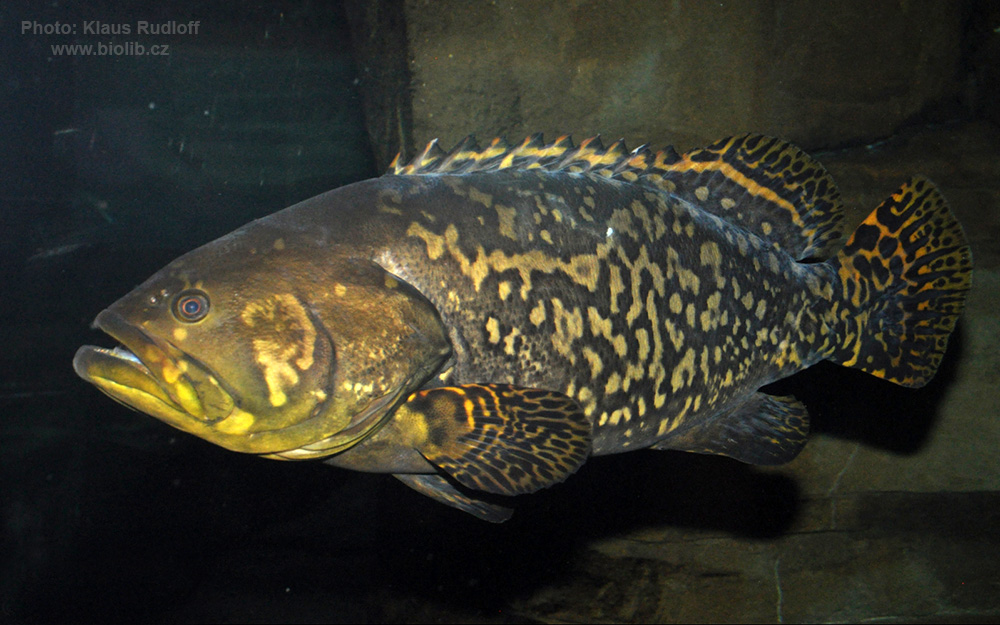Giant grouper
(Epinephelus lanceolatus)

Classification
General data
The giant grouper (Epinephelus lanceolatus), also known as the Queensland grouper, brindle grouper or mottled-brown sea bass, is a species of marine ray-finned fish, a grouper from the subfamily Epinephelinae which is part of the family Serranidae, which also includes the anthias and sea basses. It has a wide Indo-Pacific distribution and is one of the largest extant species of bony fish.
The giant grouper has a robust body which has a standard length equivalent to 2.4 to 3.4 times its depth. The dorsal profile of the head and the intraorbital area are convex, The propercle has a rounded corner and a finely serrated margin. The gill cover has a convex upper margin.
There are 11 spines and 14–16 soft rays in the dorsal fin while the anal fin has 3 spines and 8 soft rays. The caudal fin is slightly rounded.
There are 54 to 62 scales in its lateral line.
The adults are grayish-brown in colour overlain with a mottled pattern and with darker fins. The small juveniles are yellow with wide, dark irregular bars and irregular dark spots on their fins.
The giant grouper can grow to huge size with the maximum recorded standard length being 270 centimetres (110 in), although they are more common around 180 centimetres (71 in), and a maximum published weight of 400 kilograms (880 lb).
The giant grouper has a wide Indo-Pacific distribution, it is the most widely distributed species of grouper in the world. It occurs from the Red Sea and the eastern coasts of Africa as far south as Algoa Bay in South Africa and across the Indian Ocean into the Western Pacific Ocean as far east as the Pitcairn Islands and Hawaii. They occur as far north as southern Japan and as far south as Australia.
In Australia it is found from Rottnest Island in Western Australia north and east along the tropical coasts of Australia, including offshore reefs, and then south along the eastern coast to Woy Woy, New South Wales. It also occurs around Christmas Island and Cocos (Keeling) Islands and the Elizabeth and Middleton Reefs Marine National Park Reserve in the Tasman Sea.
There have also been reports from the Younghusband Peninsula in South Australia and north eastern New Zealand.
It is absent from the Persian Gulf, but it is present off the coast of Pakistan and southern Oman.











